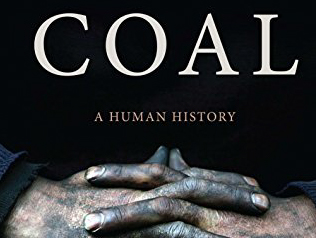The Perfect Book for Coal Lovers (and Also Haters)

It’s Coalmas! Around this time of the year, some people threaten to leave coal in our stockings like it’s a bad thing. Pfft. Geologists know coal is actually a very amazing rock and very cool to have a lump of.
If you’re not convinced that holding a several hundred year-old shiny black flammable vestige of a really unique geological era is a fabulous thing, or if you just want to marvel at its remarkable past, let me suggest Coal: A Human History by Barbara Freese. This is one of the best books I read in 2022. And I’m not just saying that because I’m a coal miner’s daughter with a soft spot for rocks that burn. I would have loved it even if I hated the vile, polluting stuff.
There’s a solid amount of geology in here, for starters, which I didn’t completely expect from a book that’s about coal’s human history. You’ll get a solid grounding in how, when, where, and why it formed. You’ll discover why there are different types, all the way from barely combustable through easy to burn but horribly dirty, to hard to burn but less disgusting, all the way up to gem-quality varieties. You’ll also come to see it as “a portable climate.” It’s a very concise introduction to this astounding rock. And I love how we get to reimagine how much we would treasure it if it were rare.
The book promises and delivers – balance. In the very first chapter, Barbara explains:
Of the various metaphors used to describe coal, that of the genie may be the most apt. To see coal purely as a gift from God overlooks the many dangerous strings attached to that gift. Similarly, to see it as just an environmental evil would be to overlook the undeniable good that accompanies that evil. Failing to recognize both sides of coal—the vast power and the exorbitant cost—misses the essential, heartbreaking drama of the story. Like a good genie, coal has granted many of our wishes, enriching most of us in developed nations beyond our wildest preindustrial dreams. But also like a genie, coal has an unpredictable and threatening side. And, although we’ve always known that, we are just beginning to realize how far-reaching that dark side is.
Oh, did I mention the writing is gorgeous? Because it is. Barbara is a marvelous wordsmith.
We follow the human experience with coal, which includes its earliest uses as a fuel (far earlier than you might expect), its uses as a gemstone (we know about the Victorians, yeah, but the Romans also absolutely adored it), and the earliest protests against its polluting powers (if you’re thinking 20th Century, you’ll need to go back… no, farther than that… keep going…. yep, early 14th Century. Pre-Black Death, even. Wow, right?). You probably won’t be surprised why it became a hot commodity, but you might be a bit astonished by who.
You also get to learn fun facts, such as: people in medieval Britain thought you could grow more coal if you mulched it with manure. Look, it made perfect sense at the time!
Britain and America get entire chapters, of course, seeing as how they’re two of the richest coal countries on the planet, but we spend plenty of time elsewhere, like India. China gets a full, meaty chapter of its own (which they cut from the Chinese edition of the book). We learn really horrifying facts about how it was and is mined (dear gods, what fireman originally meant will give you nightmares). But we also learn how many benefits it bestowed upon the ordinary folks who learned how to harness its power, and how it saved the forests. Well, until it helped destroy the climate, anyway.
Plenty of time is spent on the politics of coal, and the dirty tricks of the corporate coalmongers who want to convince us it’s clean. Will you end up wanting to twist their heads off with your bare hands? Probably! One of those companies gave me a very cushy upbringing, and I’d still cheerfully destroy their entire enterprise.
A goodly amount of time is spent on environmental movements, climate change, attempts to deal with coal’s staggering environmental impact, and the energy technologies poised to replace it. you swing from despair to hope many times, but in the end, you catch a glimpse of a possible future where the Earth’s remaining coal is mostly left in the ground (except for the lumps we need for stockings and baubles), catastrophe has been averted, clean energy is abundant, and we can both appreciate the boost coal gave to our industrial revolutions while being very grateful we don’t need it anymore.
This book is vast, covering a boggling amount of information in staggering variety, but never drags and seldom lags. Whether you love coal or hate it, this is a book that you should definitely read. We need to know this history and the details of coal’s present so that we can be better stewards now, not to mention hopefully ensure humanity has a future. If you’ve ever marveled at coal, ever despised it, or are simply indifferent to it, treat yourself to this book. It’s really good, and incredibly important.
Merry Coalmas, my darlings!

Rosetta Stones and Dana Hunter’s Unconformity wouldn’t be possible without you! If you like my content, there are many ways to show your support.
This website is a member of the Amazon Affiliates program. I get a small commission when you use my affiliate link to make a purchase.
Thank you so much for your support!




